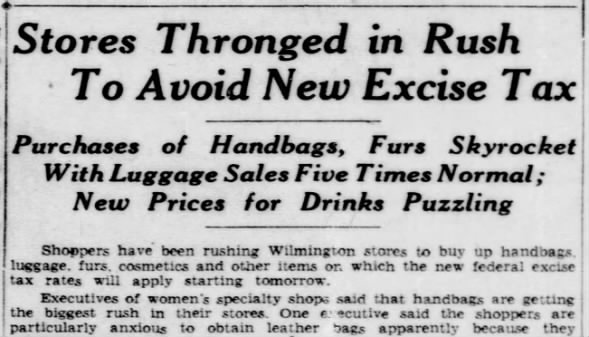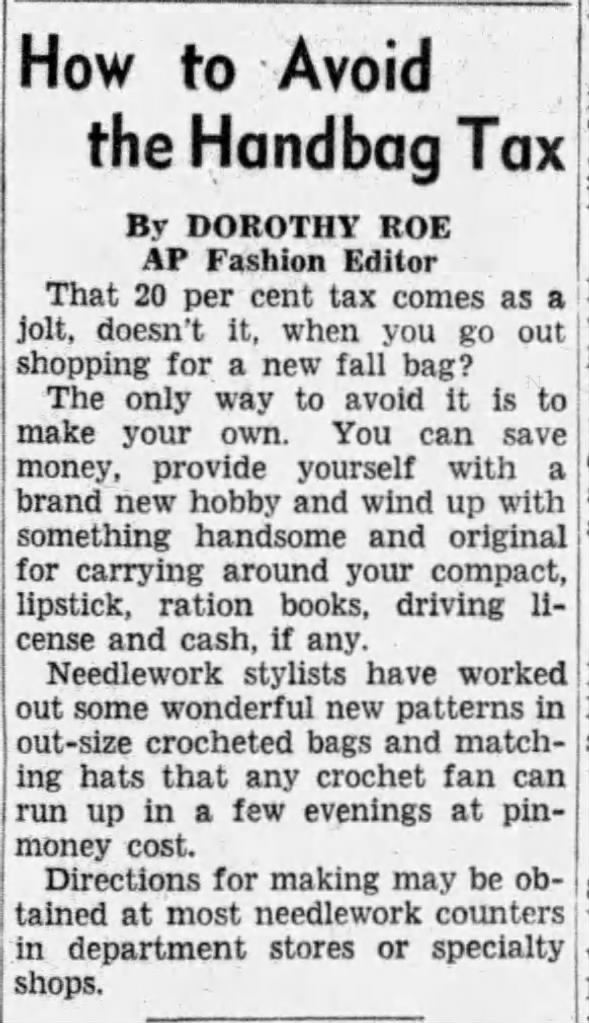Author Harold M. Groves ((1897-1969, state senator, economist, tax expert and University of Wisconsin professor) wrote the 1944 book Production, Jobs and Taxes, in which there was a small mention of federal excise taxes. Groves said that taxes on necessities “are objectionable from the standpoint of equity because they fall most heavily upon low-income families.” Although he didn't specify what should be considered a necessity and not, as in the determination of handbags, a "luxury," he also said, “If during the war the federal government launches upon a general sales-tax program, these levies should be the first to go when the war ends.”
 |
| 1944 book by Harold M. Groves, from the collection of The Vintage Purse Museum. |









